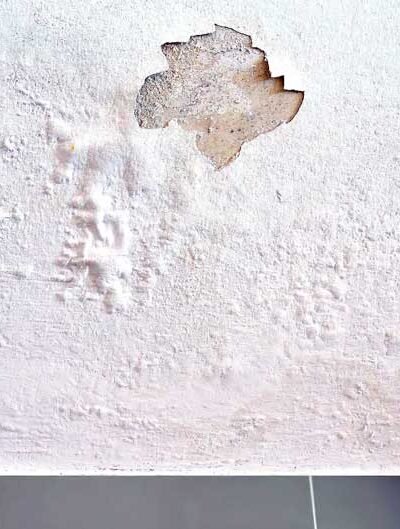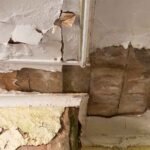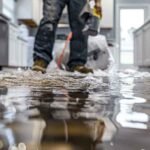Water leaks are among the most insidious and costly threats to homeowners. While some leaks are obvious — like a dripping faucet or a puddle under the sink — others remain hidden, slowly causing damage behind walls, under floors, or within ceilings, according to RENTit Colorado experts. These hidden water leaks can lead to mold growth, structural deterioration, and sky-high utility bills before they’re even detected.
Fortunately, there are subtle signs you can look out for that may indicate a hidden leak. Early water leak detection not only saves money but also prevents serious health and safety risks.
-
Unexplained Spike in Water Bills
One of the first indicators of a hidden leak is an unusually high water bill. If your household water usage habits haven’t changed but your bill has increased significantly, it’s a red flag.
What to Check:
- Compare the recent bill to your past three or four months.
- Consider seasonal factors (e.g., increased use in summer) before concluding it’s a leak.
- Use your water meter to confirm: Turn off all faucets and appliances and see if the meter continues to run.
-
Mold and Mildew Growth
Water leaks create moist environments, the ideal breeding ground for mold and mildew. If you start seeing mold or smell a musty odor, especially in areas without direct water exposure (like bedrooms or living rooms), you might have a hidden leak.
Common Spots:
- Behind walls near bathrooms or kitchens.
- Under floorboards.
- Inside HVAC systems.
Persistent mold also poses health risks such as allergies, respiratory issues, and skin irritation.
-
Peeling Paint or Wallpaper
When moisture seeps into walls, it breaks down adhesives and materials, leading to blistering paint or peeling wallpaper. This cosmetic damage often appears before any visible water damage.
Warning Signs:
- Bubbling or cracking paint.
- Discolored patches on walls or ceilings.
- Soft spots on drywall.
If these signs appear in areas away from plumbing fixtures, it’s a strong case for concealed water leaks.
-
Warped Floors and Ceilings
Water leaking underneath floors can cause hardwood or laminate to warp, buckle, or feel spongy when walked on. Ceilings may sag or develop brown water stains, especially if the leak is from a pipe above.
Indicators:
- Floorboards lifting at the edges.
- Ceiling bubbles or dips.
- A slight bounce or give under your feet.
These signs point to prolonged exposure to moisture, often from undetected leaks.
-
Low Water Pressure
A hidden leak in your plumbing system can reduce water pressure at fixtures throughout your home. It’s particularly suspicious if one area — like a single shower or faucet — is affected, rather than the whole house.
Troubleshooting:
- Rule out clogged aerators or faulty valves.
- If multiple fixtures are affected, the issue may be with your main supply line or interior piping.
Consult a plumber for professional water leak detection if the cause isn’t readily visible.
-
Sounds of Running Water
Hearing water when none is in use is a telltale sign of a hidden leak. The sound may be a faint hiss, drip, or trickle — often behind walls, beneath floors, or near water lines.
Where to Listen:
- At night, when the house is quiet.
- Near basements, crawlspaces, or utility rooms.
- Behind toilets, especially where shutoff valves connect.
If you’re consistently hearing such noises, it’s time to investigate.
-
Wet Spots or Discoloration
Visible wet patches on carpets, walls, or ceilings with no obvious source are likely caused by concealed water seepage. Over time, these spots may darken, expand, or develop mold.
Places to Check:
- Under sinks and around toilets.
- Behind appliances like dishwashers or washing machines.
- In corners where water can pool.
Don’t just clean up — find the source to prevent recurrence.
-
Foundation Cracks or Shifting
Water leaks in or near your foundation can compromise its stability. Over time, excess moisture can cause soil to expand and contract, leading to cracks or shifting.
Foundation Leak Clues:
- New or widening cracks in walls or floors.
- Doors and windows that stick or no longer align.
- Water pooling around the perimeter of your house.
Foundation issues from leaks can be extremely expensive if not caught early.
-
Hot Spots on the Floor
If you feel warm patches on tiled or concrete floors, especially in bathrooms or kitchens, it may indicate a leak in a hot water line beneath the slab.
To Confirm:
- Use a thermal imaging device or call in a professional plumber.
- These leaks are hard to spot and usually require advanced water leak detectiontechnology like acoustic listening or infrared cameras.
Slab leaks often go unnoticed until major damage is done, so hot spots should never be ignored.
-
Unpleasant Odors
Trapped moisture from a leak fosters bacterial growth, leading to foul smells. Even if you can’t see water, the odor is a good indicator that something is wrong.
Common Odors:
- Musty or earthy smell (mold/mildew).
- Rotten egg smell (bacterial growth in stagnant water).
- Dampness, especially in enclosed spaces like under-sink cabinets or crawl spaces.
Track the smell to its strongest point — it often reveals the leak’s location.
Importance of Professional Water Leak Detection
While some leaks are easy to spot, hidden ones often require specialized equipment and expertise. Here’s why hiring a professional makes sense:
Benefits:
- Accurate Diagnosis: Tools like acoustic sensors, moisture meters, and infrared imaging pinpoint leaks without tearing up walls or floors.
- Damage Prevention: Early detection stops leaks before they cause structural issues or mold infestations.
- Insurance Documentation: Professionals can provide reports that help with insurance claims for water damage.
If you suspect a hidden leak, a quick call to a licensed plumber or leak detection specialist can save you thousands in repair costs.
Preventing Hidden Water Leaks
Prevention is just as important as detection. Here are proactive steps you can take:
- Regular Inspections
Check pipes, faucets, appliances, and crawl spaces periodically for corrosion, dampness, or other unusual conditions.
- Install Leak Detection Devices
Smart home water sensors can alert you to leaks in real time via smartphone apps, helping with immediate response.
- Monitor Water Usage
Install a water meter monitor to track usage patterns and get alerts on anomalies.
- Know Your Shut-Off Valve
In case of a major leak, being able to quickly turn off the main water supply can prevent disaster.
Final Thoughts
Hidden water leaks are a homeowner’s nightmare — silent, slow, and damaging. But by staying vigilant and knowing the signs, you can catch leaks before they escalate. From high bills to warped floors and musty odors, these clues are your first defense against long-term water damage.
With the help of modern water leak detection tools and professionals, you can ensure your home stays dry, healthy, and structurally sound. Don’t wait for disaster to strike — proactive attention today saves you money, stress, and repairs tomorrow.





Leave a Reply